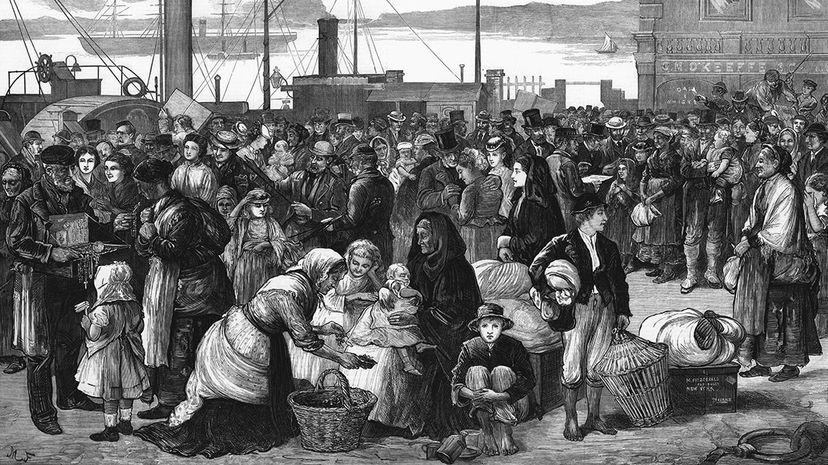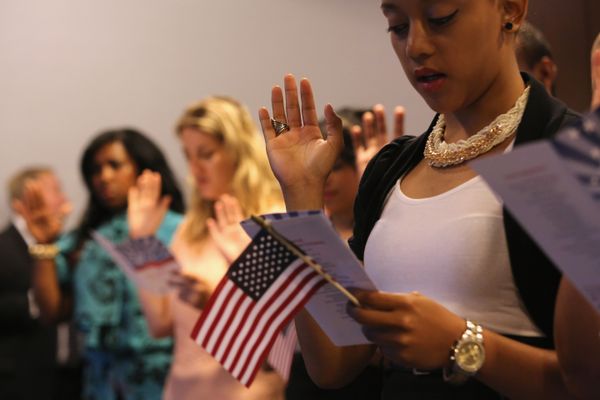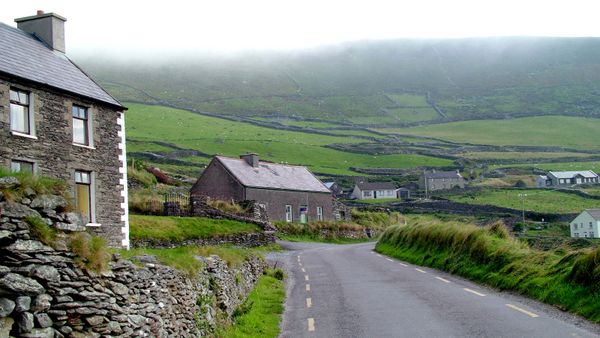
In the 19th-century United States, racism was rampant. Chinese immigrants were openly mocked, often in unfavorable newspaper caricatures. Germans were stereotyped as loitering in beer halls. African-Americans were portrayed in demeaning advertisements. And Irish people — who were not considered "white" by the existing majority at the time — were mistreated, too.
More than 1.5 million people left Ireland for the United States between 1845 and 1855, the survivors of a potato famine that had wiped out more than 1 million people in their homeland. They arrived poor, hungry and sick, and then crowded into cramped tenements in Boston, New York and other Northeastern cities to start anew under difficult conditions.
Advertisement
The struggles of Irish immigrants were compounded by the poor treatment they received from the white, primarily Anglo-Saxon and Protestant establishment. America's existing unskilled workers worried they would be replaced by immigrants willing to work for less than the going rate. And business owners worried that Irish immigrants and African-Americans would band together to demand increased wages.
As a result, locals didn't take kindly to an influx of Irish immigrants competing for resources perceived as limited. In Boston alone, 37,000 Irish immigrants arrived in 1847 — growing the city's population by more than 30 percent, straining employment, rations, housing and relations between populations.
Not only were Irish immigrants viewed as interlopers by many white Americans (an irony, considering the historical treatment of Native Americans), but these immigrants were Catholics in a primarily Protestant land. It was a religious difference that widened the divide, as did the fact that many Irish immigrants didn't speak English. As strange as may it may sound today, Irish immigrants were not considered "white" and were sometimes referred to "negroes turned inside out."

There's proof of this discrimination in cartoons and advertisements that were published during the mid- to late-1800s. Irish often were portrayed as racially different from the wider population of Caucasians and those of Anglo-Saxon heritage, writes historian Noel Ignatiev in his 1995 book "How the Irish Became White." Irish immigrants, both male and female, were drawn with brutish, ape-like features. Even pseudoscience got in on the act. "Comparative Physiognomy," a book by James Redfield published in 1852, made comparisons between the facial structure of Irish people and dogs. Redfield went on to claim that, because of their appearance, the Irish had an animalistic character that made them cruel and cowardly.
"Among the Irish, the commonality take to dirt-digging more naturally than to anything else," Redfield wrote. "They are dirty in their persons, and admit pigs in their mud-cabins which they themselves occupy. They are good servants if you deal harshly with them, as a master does with his dog; but the moment you are disposed to be familiar with them they are all over you, jumping against you and laying their dirty paws upon your clean clothes, as if you were no better than they."

This type of xenophobia — the fear of people or things perceived to be different — was bolstered by the formation of the Know-Nothing Party, a U.S. political party that originated in 1849 and grew during the following decade. Members of the party opposed the Catholic religion in general and Irish Catholics in particular. They feared Irish Catholics would take over the U.S. and potentially raise up the pope as the country's ruler, replacing secular law with religious dictates.
Although Irish immigrants faced oppression in the United States, they also participated in it. African-Americans and Irish were considered by many Northern whites to be on equal footing, but many Irish immigrants quickly embraced "white" identities and became part of the social construct that oppressed African-Americans as an avenue to better employment, interweaving issues of classism and racism.
"Once the Irish secured themselves in those jobs, they made sure blacks were kept out," writes historian Art McDonald. "They realized that as long as they continued to work alongside blacks, they would be considered no different. Later, as Irish became prominent in the labor movement, African Americans were excluded from participation ... And so, we have the tragic story of how one oppressed 'race,' Irish Catholics, learned how to collaborate in the oppression of another 'race,' Africans in America, in order to secure their place in the white republic."
Race relations in the United States have long been complicated, and suffering and discrimination is not a zero-sum; for instance, see the discredited but persistent myth of Irish slavery that still makes the rounds on the internet. Today, it may be difficult to imagine a time when fair-skinned people of Irish descent weren't considered white. However, definitions of race have changed over time — and may be just as rooted in class, labor, economics and fear as they are in skin pigmentation.
Advertisement

